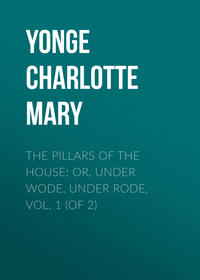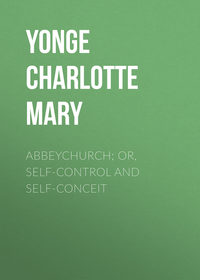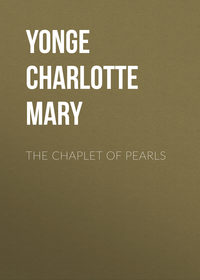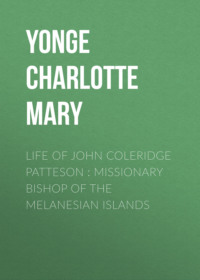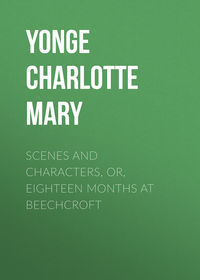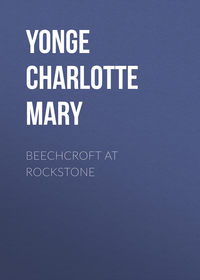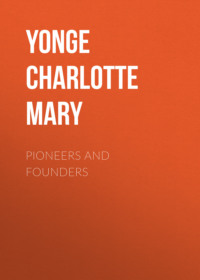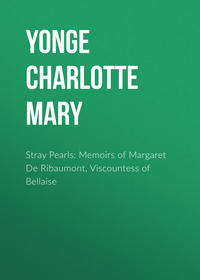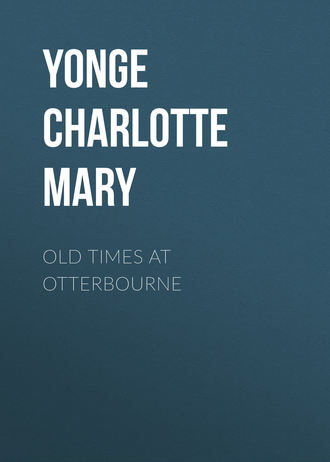 полная версия
полная версияOld Times at Otterbourne
It is to be observed that all the entries here are of births, not of baptisms, departing from the general rule of Church registers, and they are all in English; but in 1663 each child is recorded as baptized, and the Latin language is used. This looks much as if a regular clergyman, a scholar, too, had, after the Restoration, become curate of the parish. He does not sign his registers, so we do not know his name. In 1653 the banns of William Downe and Jane Newman were published September 17th and the two Lord’s Days ensuing, but their wedding is not entered, and the first marriage recorded is that of Matthew Dummer and Jane Burt, in 1663. The first funeral was Emelin, wife of Robert Purser, in 1653.
Also, there was plenty of brick-making, for King Charles II had planned to build a grand palace at Winchester on the model of the great French palace of Versailles, and it is said that Dell copse was formed by the digging out of bricks for the purpose. It was to reach all over the downs, with fountains and water playing in them, and a great tower on Oliver’s Battery, with a light to guide the ships in the Channel. There is a story that Charles, who was a capital walker, sometimes walked over from Southampton to look at his buildings. One of the gentlemen who attended him let the people at Twyford know who was going that way. So they all turned out to look at him, which was what the King by no means wished. So he avoided them, and punished his indiscreet courtier by taking a run and crossing one of the broad streams with a flying leap, then proceeding on to Winchester, leaving his attendant to follow as best he might.
After all only one wing of the intended palace was built. For a long time it was called the King’s House, but now it is only known as the Barracks. The work must have led to an increase in the population, for more baptisms are recorded in the register, though not more than six or seven in each year, all carefully set down in Latin, though with no officiating minister named. There is an Augustine Thomas, who seems to have had a large family, and who probably was the owner of the ground on which the vicarage now stands, the name of which used to be Thomas’s Bargain.
There must have been a great quickening of activity in Otterbourne soon after the Restoration, for it was then that the Itchen canal or barge river, as it used to be called, was dug, to convey coals from Southampton, and, of course, this much improved the irrigation of the water meadows. This canal was one of the first made in England, and was very valuable for nearly two hundred years, until the time of railways.
In 1690, a larger parchment register was provided, and every two years it appears to have been shown up to the magistrates at the Petty Sessions, and signed by two of them.
At this time there seem to have been some repairs of the church. Certainly, a great square board painted with the royal arms was then erected, for it bore the date 1698, and the initials “W. M.” for William and Mary. There it was, on a beam, above the chancel arch, and the lion and unicorn on either side, the first with a huge tongue hanging out at the corner of his mouth, looking very complacent, as though he were displaying the royal arms, the unicorn slim and dapper with a chain hanging from his neck.
Several of our old surnames appear about this time, Cox, Comley, Collins, Goodchild, Woods, Wareham. John Newcombe, Rector of Otterbourne, who afterwards became Bishop of Llandaff, signs his register carefully, but drops the Latin, as various names may be mentioned, Scientia, or Science Olden, Philadelphia Comley, and Dennis Winter, who married William Westgate. Anne and Abraham were the twin children of John and Anne Didimus, in 1741.
The first church rate book only begins in 1776, but it is curious as showing to whom the land then belonged. The spelling is also odd, and as the handwriting is beautiful, so there is no doubt that it really is an account of the Church Raiting, nor that the “rait” was “mead.” Walter Smythe, Esquire, of Brambridge, appears, also John Colson John Comley, and Charles Vine. Lincolns belonged to Mr. Kentish and Gun Plot to Thilman.
The expenditure begins thus:—April 9, 1776, “Pd. Short for 6 dozen sparw heds,” and the sparw heds are repeated all down the page, varied with what would shock the H. H.—3d. for foxheads. Also “expenses ad visitation” 9s. 6d., and at the bottom of the page, the parish is thus mentioned as creditor “out of pockets, 5s. 1d.” In 1777 however, though the vestry paid “Didums 1 badger’s head, 1 polecat’s head; Hary Bell for 2 marten cats, and spares innumerable, and the clarck warges, £1. 5s., there was £1. 3s. in hand.” The polecats and marten cats were soon exterminated, but foxes, hedgehogs, and sparrows continue to appear, though in improved spelling, till April 24th, 1832, when this entry appears:—“At a meeting called to elect new Churchwardens, present the Rev. R. Shuckburgh, curate, and only one other person present, the meeting is adjourned. Mr. Shuckburgh protests most strongly against the disgraceful custom of appropriating money collected for Church rates towards destroying vermin on the farms.” And this put an end to the custom. However, there were more rightful expenses. Before Easter there is paid “for washan the surples” 4s. It would seem that the Holy Communion was celebrated four times a year, and that the Elements were paid for every time at 3s. 7d. In 1784, when there was a great improvement in spelling, there were some repairs done—“Paid for Communion cloth, 10 pence, and for washing and marking it, 6p.” In 1786 there was a new church bell, costing £5. 5s. 10d. Aaron Chalk, whom some of the elder inhabitants may remember, a very feeble old man walking with two sticks, was in that year one of the foremost traders in sparrow heads. It gives a curious sense of the lapse of time to think of those tottering limbs active in bird catching.
May 2, in 1783, we find the entry “paid for the caraidge of the old bell and the new one downe from London, 11s. 10d. May 22—Paid William Branding bill for hanging the new bell, £1. 13s.” Altogether, at the end of the year, it is recorded “the book in debt” £1. 11s., but “the disburstments,” as they are spelt, righted themselves in 1784, when we find “paid for musick for the use of the Church, £1. 1s. To George Neal for whitewashing Church, £1. 1s., George Neale, two days’ work, 5s. 3d., for work in the gallery, 19s. 4d., bill for tiles, 3s. 4d.”
The only connection Otterbourne has with any historical person is not a pleasant one. The family of Smythe, Roman Catholics, long held Brambridge, and they endowed a little Roman Catholic Chapel at Highbridge. At one time, a number of their tenants and servants were of the same communion, and there is a note in the parish register by the curate to say that there were several families at Allbrook and Highbridge whose children he had not christened, though he believed they had been baptized by the Roman Catholic priest. One of the daughters of the Smythe family was the beautiful Mrs. Fitz-Herbert, whom the Prince of Wales, afterwards George IV, was well known to have privately married. He never openly avowed this, because by the law made in the time of William III, a marriage with a Roman Catholic disqualifies for the succession to the crown; besides which, under George III, members of the royal family had been prohibited from marrying without the King’s consent, and such marriages were declared null and void. The story is mentioned here because an idea has gone abroad that the wedding took place in the chapel at Highbridge, but this is quite untrue. The ceremony was performed at Brighton, and it is curious that the story of it having happened here only began to get afloat after the death of Mr. Newton, the last of the old servants who had known Mrs. Fitz-Herbert. Walter Smythe, her brother, was one of the détenus whom Napoleon I kept prisoners, though only English travellers, on the rupture of the Peace of Amiens. His brother, Charles, while taking care of the estate, had all the lime trees in the avenue pollarded, and sold the tops to make stocks for muskets.
In those days there was only a foot bridge across the Itchen at Brambridge. Carts and carriages had to ford the river, not straight across, but making a slight curve downwards; this led to awkward accidents. There was a gentleman dining with Mr. Walter Smythe, who was pressed to sleep at Brambridge, but declined, saying that he liked to have all his little comforts about him. When daylight came, the poor man was found seated on the top of his chaise, the water flowing through the windows below; for the post boy had taken a wrong turn, and, being afraid to move, had been forced to remain in the river till the morning. A far worse disaster befel the Newton family on their way to a funeral. It is described by one of the bearers: “When the cart turned over, the corpse was on the foot bridge. It was a very wet day, and the wind was blowing furiously at the time. It had a great effect on the cart, as it was a narrow cart with a tilt on, and there was a long wood sill at the side of the river. That dropping of the sill caused the accident. I think there were five females in the cart and the driver. The water was as much as 4ft. deep and running very sharp, so myself and others went into the water to fetch them out, and when we got to the cart they were all on the top of the other, with their heads just out of the water. They could not go on to church with the corpse, and we had a very hard job to save the horse from being drowned, as his head was but just out of the water.”
All through the time of the long war with France there was here, as well as everywhere else around the coast, fear of a landing of the French. The flat-bottomed boats to bring the French over were actually ready at Boulogne, and the troops mustered to come across in them. On our side, volunteers were in training in case of need, and preparations were made for sending off the women and children inland on the first news of the enemy landing. Not very many years ago there were still to be seen in a barn at Hursley the planks prepared to fit as seats into the waggons that were to carry them away. And a family living here are said to have kept everything packed up, even the fireirons, and to have stirred up the fire with a stick during a whole winter. However, by God’s blessing and our fleets and armies, the danger was kept from our doors.
With the activity that followed upon the peace came a great deal of road-making. The present high road between Winchester and Southampton was then made, and the way cut through the hills—Otterbourne Hill and Compton Hill on either side. This led to the main part of the inhabitants settling in the village street, instead of round the old Church as before. Another great road was made at the same time—that which crosses Golden Common and leads ultimately to Portsmouth. It used to be called Cobbett’s Road, because William Cobbett, a clever, self-taught man, had much to do with laying it out. Cobbett had a good many theories which he tried to put into practice, some sensible, others mistaken. The principal traces we see of him now are in the trees that he planted, chiefly introduced from America. He thought the robinia, or false acacia, would make good hedges, because of its long thorns and power of throwing up suckers, and many people planted them, but they proved too brittle to be of much use, though some are still growing. He was a friend of Mr. Harley, who then owned Otterbourne House, and planted many curious trees there, of which two long remained—a hickory nut and a large tree in the drive. There was also an oak with enormous leaves, but it was planted so near the house that it had to be moved, and died in consequence.
These roads were for the coaches. Young folks, who never saw anything nearer approaching to a stage coach than the drags some gentlemen keep, can hardly fancy what these stage coaches were—tall vehicles, holding four inside passengers and at least twelve outside and quantities of luggage. They were drawn by four of the strongest and quickest horses that could be procured, and these were changed about every five or six miles, so as to keep up full speed. The coachman, generally a big, burly man, with a face reddened by exposure to the weather, and often by a glass of ale at every stage, sat on the box in a drab coat, with many capes one over the other. The seat next to him was the favourite one with the passengers, and gentlemen would sometimes bribe coachmen to let them drive; nay, some gentlemen actually took to the trade themselves. There was also a guard, who in mail coaches took care of the post bags, and dropped them at the places where they were intended for. In the days when highwaymen infested the roads the guard had carried pistols, and still the guard of the mail wore a red coat, and blew a horn on entering any place to warn the people to bring out their post bags and exchange them for others.
One or two coaches kept their horses at the White Horse, so as to be fresh for going up the hill, others at the Cricketers, while others changed at Compton and the New Hut. Some of the stables still remain, converted into cottages. The horses were fine animals, beautifully kept; but the habit of hanging about public-houses to attend to them was not good for the ostlers and people concerned. About fifteen coaches came through this place in the morning, and their fellows in the evening, each proprietor keeping two coaches, starting from the two opposite ends at the same time. There was the Mail, the Telegraph, the Independent, the Red Rover, the Hirondelle, all London coaches, besides the Oxford coach and some that only ran between Winchester and Southampton. The driver and owner of one, Mason’s coach, was only a few years ago living here. When people intended to go on a journey, they booked their places a day or two beforehand, but for short journeys or going into Winchester they would watch for a vacant space in a coach as it passed by.
It is odd to look back at an old article in a quarterly review describing coach travelling as something so swift and complete that it could not be surpassed in its perfection. Yet accidents with the spirited horses and rapid driving were not uncommon, and a fall from an overloaded coach was a dangerous thing.
When the mail went by coach the sending of letters and parcels could not but be expensive. Heavy goods travelled by waggon, barge, or ship, parcels went by carriers or by coaches, and nothing could be posted but what was quite light. So postage was very expensive, and it is strange to look back on the regulations connected with it. Our readers under forty years old will hardly believe the rates that were paid for postage, varying according to distance. There was a company in London that carried letters from one part of that town to another for twopence apiece, and this was the cheapest post in England. A letter from London to Otterbourne cost eightpence, and one from Winchester either threepence or fourpence, one from Devonshire elevenpence, and this was paid not by the sender, but by the receiver. It was reckoned impolite to prepay a letter. Moreover, the letter had to be on a single sheet. The sheet might be of any size that could be had, but it must be only one. A small sheet enclosed within another, or the lightest thing, such as a lock of hair or a feather, made it a double letter, for which double postage had to be given. The usual custom was to write on quarto sheets twice the size of what is used now, and, after filling three sides, to fold the fourth, leaving a space for the direction and the seal, and then to write on the flaps and in the space over “My dear –,” sometimes crossing the writing till the whole letter was chequer work. For if the letter was to cost the receiver so much, it seemed fair to let him get as much as possible. Letters were almost always sealed, and it took neat and practised hands to fold and seal them nicely, without awkward corners sticking out.
Newspapers, if folded so as to show the red Government stamp, went for a penny, but nothing might be put into them, and not a word beyond the address written on them. The reason of all this was that the cost of carriage was then so great that it could only be made to answer by those high rates, and by preventing everything but real letters and newspapers from being thus taken. As Government then, as now, was at the expense of postage, its own correspondence went free, and therefore all Members of Parliament had the privilege of sending letters freely. They were allowed to post eleven a day, which might contain as much as would weigh an ounce, without charge, if they wrote the date at the top and their name in the right hand corner. This was called franking, and plenty of letters by no means on public business travelled in that way.
There was no post office in Otterbourne till between 1836 and 1840; for, of course there were few letters written or received, and thus it did not seem to many persons worth while for village children to learn to write. If they did go into service at a distance from home, their letters would cost more than their friends could afford to pay. This was a sad thing, and broke up and cut up families very much more than any distance does now. It really is easier to keep up intercourse with a person in America or even New Zealand now, than it was then with one in Scotland, Northumberland, or Cornwall; for travelling was so expensive that visits could seldom be made, and servants could not go to their homes unless they were within such a short distance as to be able to travel by coach or by carrier’s cart, or even walking all the way, getting a cast now and then by a cart.
People who did not travel by coaches, or who went where there was no coach, hired post-chaises, close carriages something like flies. Most inns, where the coaches kept their horses, possessed a post-chaise, and were licensed to let out post horses for hire. Most of the gentlefolks’ families kept a close carriage called a chariot, and, if they did not keep horses of their own, took a pair of post-horses, one of which was ridden by a man, who, whatever might be his age, was always called a post-boy. Some inns dressed their post-boys in light blue jackets, some in yellow ones, according to their politics, but the shape was always the same; corduroy tights, top boots, and generally white (or rather drab-coloured) hats. It used to be an amusement to watch whether the post-boy would be a blue or a yellow one at each fresh stage. Hardly any one knows what a post-boy was like now, far less an old-fashioned travelling carriage or chariot and its boxes.
The travelling carriage was generally yellow. It had two good seats inside, and a double one had a second seat, where two persons sat backwards. The cushion behind lifted up and disclosed a long narrow recess called the swordcase, because, when there were highwaymen on the roads, people kept their weapons there. There were sometimes two, sometimes one seat outside, called the box and the dickey—much the pleasantest places, for it was very easy to feel sick and giddy inside. A curved splashboard went up from the bottom of the chariot to a level with the window, and within it fitted what was called the cap box, with a curved bottom, so that when in a house it had to be set down in a frame to hold it upright. A big flat box, called the imperial, in which ladies put their dresses, was on the top of the carriage, two more long, narrow ones, generally used for shoes and linen, fitted under the seat, and another square one was hung below the dickey at the back, and called the drop box. Such a mischance has been known as, on an arrival, a servant coming in with the remains of this black box between his arms, saying—“Sir, should not this box have a bottom to it?” The chariot thus carried plenty of goods, and was a sort of family home on a journey. To go to Plymouth, which now can be done in six or seven hours, then occupied two long days, halting for the night to sleep at an inn.
The Old Church
Some of us can still remember the old Church and the old Sunday habits prevailing before 1830. The Churchyard was large and very pretty, though ill kept, surrounded with a very open railing, and with the banks sloping towards the water meadows clothed with fine elm trees—one with a large and curious excrescence on the bark. There was a deep porch on the south side of the Church, with seats on each side. Then, on red tiles, one entered between two blocks of pews of old brown unpainted oak (their doors are panels to the roof of the boys’ school). In the space between them were two or three low benches for the children. There were three arches leading to the chancel, but that on the south side was closed by the pulpit and reading desk, and that on the north by a square pew belonging to Cranbury. Within the chancel on the north side was a large pew lined with red, belonging to Cranbury, and on the south, first the clerk’s desk, then a narrow seat of the clergyman’s, and then a large square pew. Boys in the morning and men in the afternoon used to sit on the benches placed outside these, and beyond was the rail shutting in the Altar, which was covered with red cloth, and stood below a large window, on each side of which were the Commandments in yellow letters on a blue ground, and on the wall were painted the two texts, “The Cup of Blessing, is it not the Communion of the Blood of Christ?” and “The Bread which we break, is it not the Communion of the Body of Christ?” The vestry was built out to the north, and was entered from the sanctuary.
Further space was provided by two galleries, one on the north side, supported on iron poles, and entered from the outside by a step ladder studded with large square-headed nails to prevent it from being slippery. The other went across the west end, and was entered by a dark staircase leading up behind the pews, which further led to the little square weather-boarded tower containing two beautifully toned bells. These were rung from the outer gallery where the men sat. There was a part boarded off for the singers. The Font was nearly under the gallery. It was of white marble, and still lines our present Font. Tradition says it was given by a former clerk, perhaps Mr. Fidler, but there is no record of it. An older and much ruder Font was hidden away under the gallery stairs close to an old chest, where women sometimes found a seat, against the west wall.
In those days, now more than half a century ago, when Archdeacon Heathcote was Vicar, he or his Curate used to ride over from Hursley on Sunday for the service at Otterbourne. There was only one service, alternately in the morning and afternoon, at half-past ten or at three, or in the winter at half-past two. The time was not much fixed, for on a new comer asking when the service would take place, the answer was “at half-past two, sir, or at three, or else no time at all,” by which was meant no exact hour or half-hour. This uncertainty led to the bells never being rung till the minister was seen turning the corner of Kiln-lane, just where the large boulder stone used to be. The congregation was, however, collecting, almost all the men in white smocks with beautifully worked breasts and backs, the more well-to-do in velveteen; the women in huge bonnets. The elder ones wore black silk or satin bonnets, with high crowns and big fronts, the younger ones, straw with ribbon crossed over, always with a bonnet cap under. A red cloak was the regular old women’s dress, or a black or blue one, and sometimes a square shawl, folded so as to make a triangle, over a gown of stuff in winter, print in summer. A blue printed cotton with white or yellow sprays was the regular week day dress, and the poorest wore it on Sundays. The little girls in the aisle had the like big coarse straw bonnets, with a strip of glazed calico hemmed and crossed over for strings, round tippets, and straight print frocks down to their feet. The boys were in small smocks, of either white or green canvas, with fustian or corduroy jackets or trowsers below, never cloth. Gloves and pocket handkerchiefs were hardly known among the children, hardly an umbrella, far less parasols or muffs. Ladies had pelisses for out-of-door wear, fitting close like ulsters, but made of dark green or purple silk or merino, and white worked dresses under them in summer.




